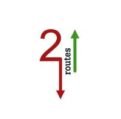Technical analysis is a way to evaluate investments and identify trading opportunities by analyzing statistical trends gathered from trading activity, such as price movement and volume. Here’s a breakdown of the key concepts:
Core Principles of Technical Analysis
- Market action discounts everything: This means that all known information (economic data, news events, etc.) is already reflected in the price of an asset. Technical analysts believe that studying price action is sufficient for making trading decisions.
- Prices move in trends: The idea that prices tend to move in sustained trends (up, down, or sideways) rather than randomly. Technical analysts seek to identify these trends and trade in their direction.
- History tends to repeat itself: This principle suggests that past price patterns and market behavior can provide insights into future price movements.
Tools and Techniques
Technical analysts use various tools and techniques to analyze price charts and identify trading opportunities:
- Charts: Visual representations of price movements over time. Common chart types include:
- Line charts: Connect closing prices with a continuous line.
- Bar charts: Show the high, low, open, and close prices for a given period.
- Candlestick charts: Similar to bar charts but with a more visually appealing format that highlights the relationship between opening and closing prices.
- Trendlines: Lines drawn on charts to identify the direction of a trend.
- Support and resistance levels: Price levels where the price tends to find support (a floor) or resistance (a ceiling).
- Chart patterns: Recognizable patterns on charts that suggest potential future price movements (e.g., head and shoulders, double tops/bottoms).
- Technical indicators: Mathematical calculations based on price and volume data that are used to generate trading signals (e.g., moving averages, Relative Strength Index (RSI), MACD).
How Technical Analysis Is Used
- Identifying entry and exit points: Technical analysis can help traders determine when to enter or exit a trade based on price patterns, trendlines, and indicators.
- Setting stop-loss orders: Technical levels, such as support and resistance, can be used to place stop-loss orders to limit potential losses.
- Confirming trading signals: Technical analysis can be used in conjunction with other forms of analysis (such as fundamental analysis) to confirm trading signals.
Important Considerations
- Not a guarantee: Technical analysis is not a foolproof method for predicting future price movements. It’s a probabilistic approach.
- Subjectivity: There can be some subjectivity in interpreting charts and patterns.
- Importance of risk management: It’s crucial to combine technical analysis with sound risk management practices.
In conclusion, technical analysis is a valuable tool for traders and investors looking to make informed trading decisions based on historical price data and market trends. It provides a framework for analyzing price charts, identifying trading opportunities, and managing risk.
